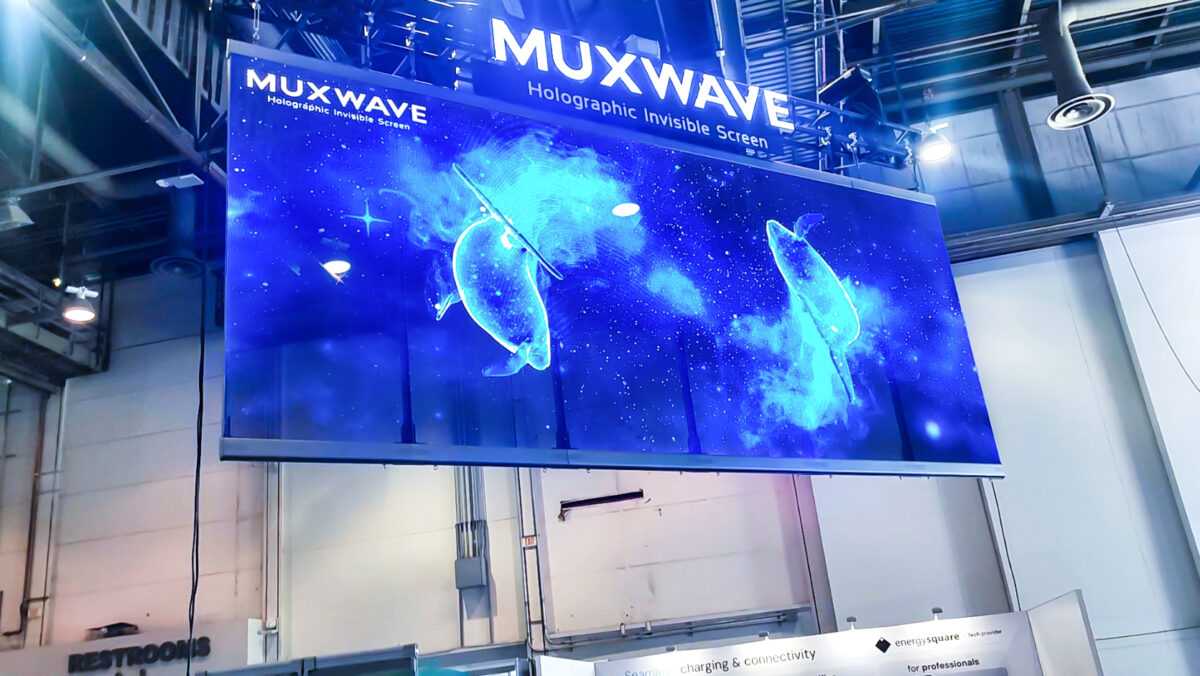
In recent days, the four-day 'Consumer Electronics Spring Festival'—the 2024 International Consumer Electronics Show (CES)—concluded in Las Vegas, USA. It is reported that this year, the number of Chinese exhibitors and attendees reached a small peak in recent years. According to data released by CES, among the over 4,000 exhibiting companies, more than 1,100 are Chinese enterprises and their overseas branches. With AI integrating into PCs and home appliances, cars growing wings, and robots and XR entering broader scenes such as healthcare and disaster relief, the lively CES 'tech temple fair' seems to herald the gradual recovery of the consumer electronics industry in the coming days. Meanwhile, LED screen technology remains an indispensable focus at CES."
The Emerging Trend of New Display Technologies at the Exhibition
The transparent display is undoubtedly a major attraction at the exhibition. MUXWAVE's holographic invisible screen has introduced a rapid free splicing and ultra-light ultra-thin suspension solution, utilizing P3.91 pixel pitch with no glass encapsulation, presenting a sleek and atmospheric appearance. The screen is as thin as 1.8mm and weighs only 6kg/m². The technology of transparent display once again leaves people amazed. LED transparent screens have rapidly developed and become a new force in the commercial display field, representing an irreplaceable presence in the LED display segment. In the last two years, the LED transparent screen industry has undergone significant changes, transitioning from incremental to stock competition. The industry market is rapidly expanding, with an increase in demand, and manufacturers are competing in terms of growth rate. However, as the market reaches a saturation point, growth slows down or even stalls. In this limited market demand, competition shifts towards market share.
XR Virtual Display Demonstrates Impressive Capability
According to incomplete statistics, this exhibition has seen the participation of over 350 XR companies from around the world, including terminal manufacturers and upstream optical solution providers. In fact, concerning the XR industry, the release of the Apple Vision Pro last year rekindled interest in this sector, redirecting market attention here. According to the latest Counterpoint Global XR (VR/AR) Forecast, the shipment volume of Extended Reality (XR) headsets is expected to increase by 3.9 million units in 2024, reaching a historic high and achieving double-digit YoY growth. Augmented Reality (AR) is projected to grow by 54% YoY in 2024, reversing the downward trend of the past three years.
Moreover, the imaginative space for combining XR virtual technology with various industries is vast, bringing more creativity and possibilities to display technology. XR technology enables intelligent adaptive displays, more accurate color matching, and, with the help of AI algorithms or large model technology, LED displays achieve more intelligent content display, advertising delivery, command decisions, and more. Integrated with smart home and smart office scenarios, enhancing the efficiency of LED displays may bring about more comfortable visual effects or higher work efficiency in the future."